This post may contain affiliate links. Please see our disclosure policy.
Damson jam is a delicious way to use damson plums in season. It comes together quickly with just a few ingredients, and no added pectin!
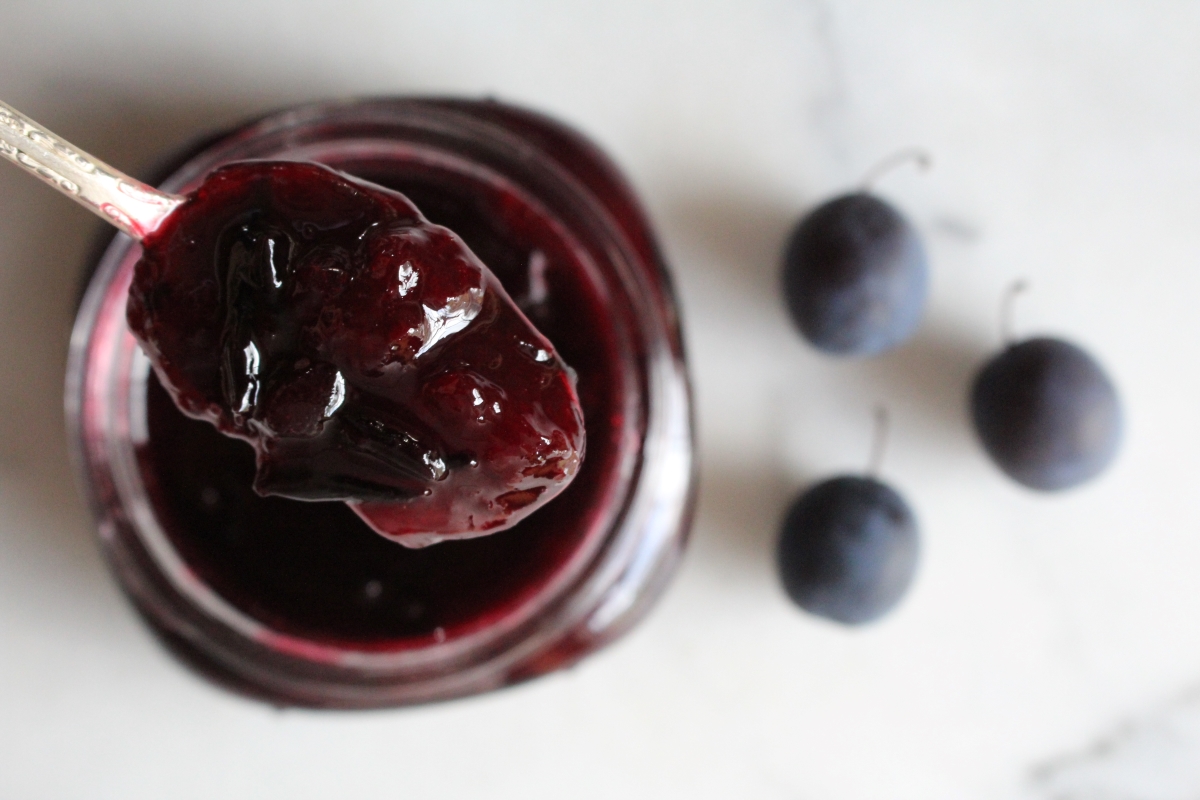
Damson plums are incredible fruits, and while they are technically “plums,” they’re really in a class of their own. The trees are prolific, and will literally carpet the ground with fruit if you don’t get out there to harvest.
Harvesting these deep purple fruits each August is well worth the effort, even though they may seem small.
While damsons are not often eaten fresh, they make an incredible jam with just a few ingredients (and no added boxed pectin). They also make a darn good damson wine, and a spectacular infused gin.
But for now, we’re focusing on damson jam, which is the star of the show.
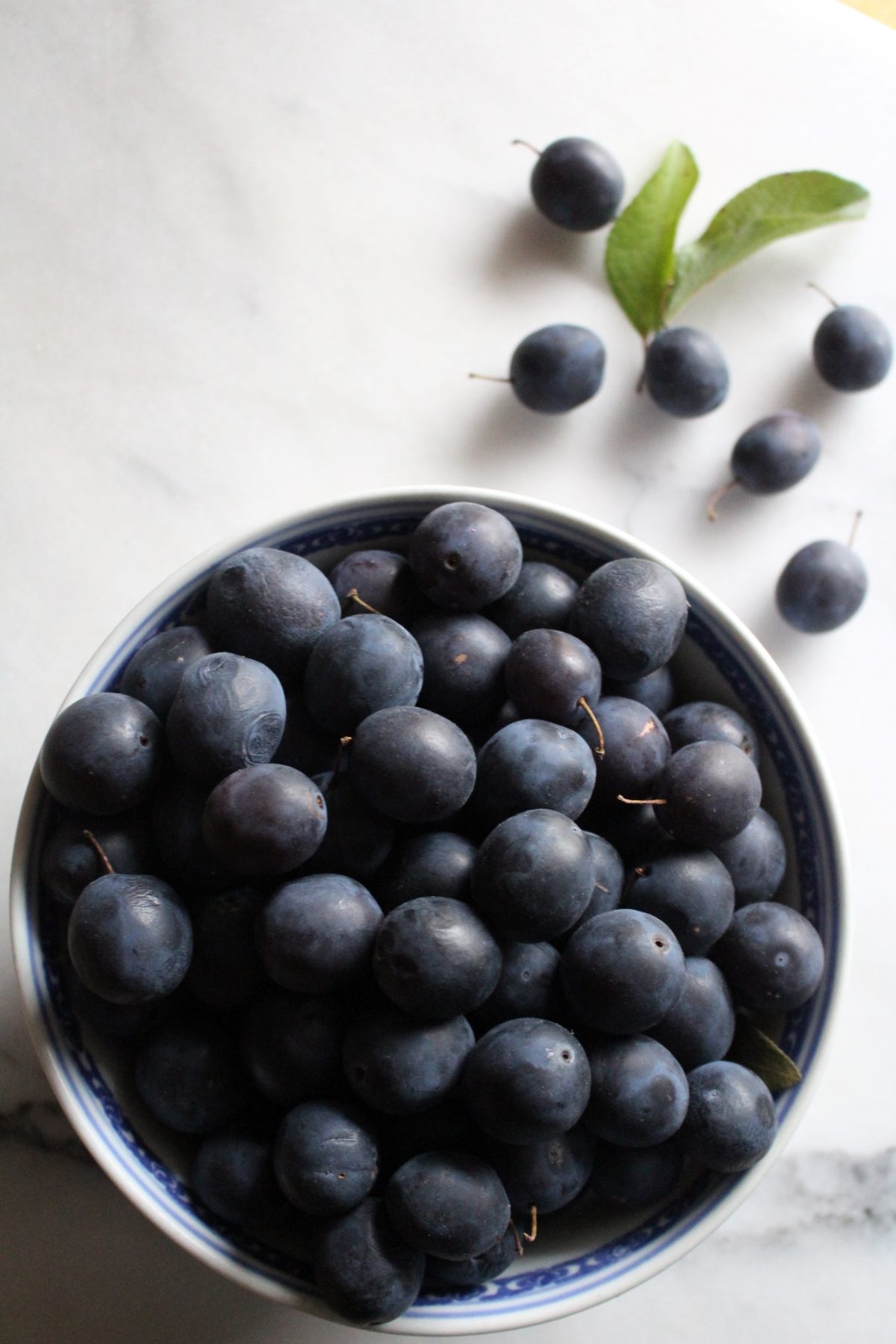
Ingredients for Damson Jam
The ingredients for damson jam are quite simple, and since the fruits are naturally high in pectin, you’d don’t have to add any of the boxed stuff. (Which is nice because it’s expensive, and nearly doubles the price of a batch of jam.)
This is a classic recipe that comes from the book So Easy to Preserve by the University of Georgia cooperative extension. It’s tested and safe for canning, but it also makes an excellent refrigerator or freezer preserve.
To make about 6 half pint (8 oz) jars of jam, you’ll need:
- 5 cups pitted and coarsely chopped damson plums (about 2 lbs fresh/unpitted)
- 3 cups sugar
- 3/4 cup water
The water in this recipe is just there to keep the plums from scorching as they begin to cook, as it can take a bit for the fruits to begin to disintegrate and release their juices. Even if your fruits are very juicy, they need to cook for a bit so the natural pectin in the fruit can activate…and the mixture can get too dry before the pectin is ready. Be sure to add the water at the beginning of your cook time.
Preparing Damsons for Jam
Making damson jam starts with preparing the fruits. The first step is removing the pits, which can be incredibly difficult by hand with a paring knife.
The fruits are quite small, only the size of large cherries, and the pits are “cling stone” which means they don’t separate easily from the soft flesh of the fruit.
Small size is actually a benefit in this case, and since they’re not much bigger than cherries…they fit beautifully into a cherry pitter. I’m using a simple hand pitter from OXO, and it makes quick work of the damson stones.
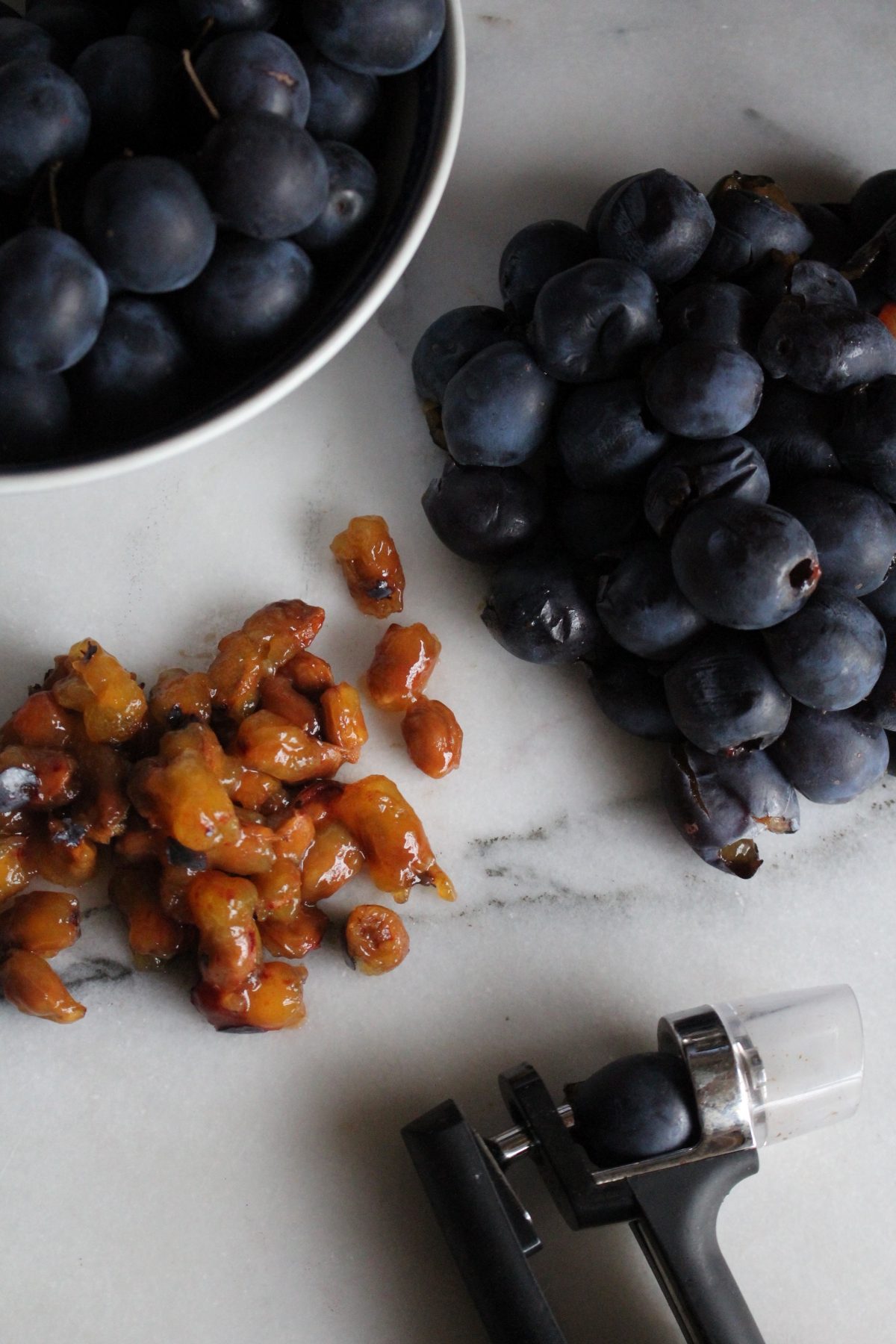
Once the fruit are pitted, it helps to coarsely chop them just so that the pieces of damson peel aren’t too large in your finished jam. It’s important to leave the peels in for a number of reasons:
- They contribute pectin which helps the jam set
- The peels give the jam a lovely color
- Damson peels have most of the distinctive flavor of these special fruits
- Chunks of peel give the jam texture
I know, some people are still going to want to strain out the peels, and while you can do that…it won’t create what I’d call “jam.” The resulting preserve would be more like damson plum butter instead, but without all the incredible flavor that’s in the peels. (If you really want to make a good damson plum butter, you use an immersion blender to blend up all the fruit pulp, peels included…and then slow cook it like homemade apple butter.)
Anyhow, chop the fruit, peels and all. Then you’re ready to make damson jam.
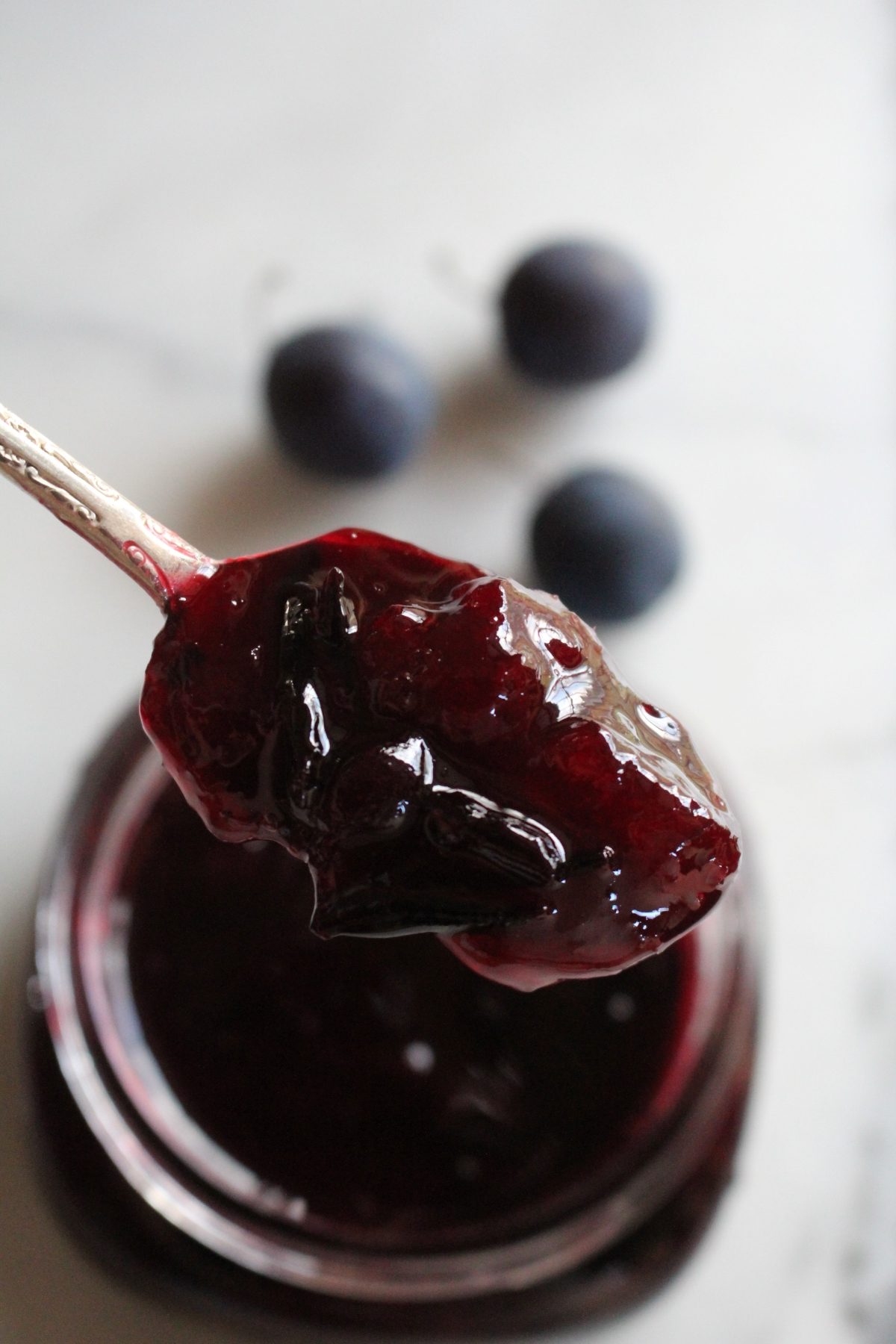
How to Make Damson Jam
To make damson jam, add the chopped pitted fruit to a jam pot along with the water and sugar.
Stir to distribute the ingredients and turn on the heat to medium high.
The fruit should fall apart relatively quickly as the jam cooks. At first it’ll look like a sea of plum pulp with peels floating in it, but the peels will soften and the jam will take on a more uniform color and texture.
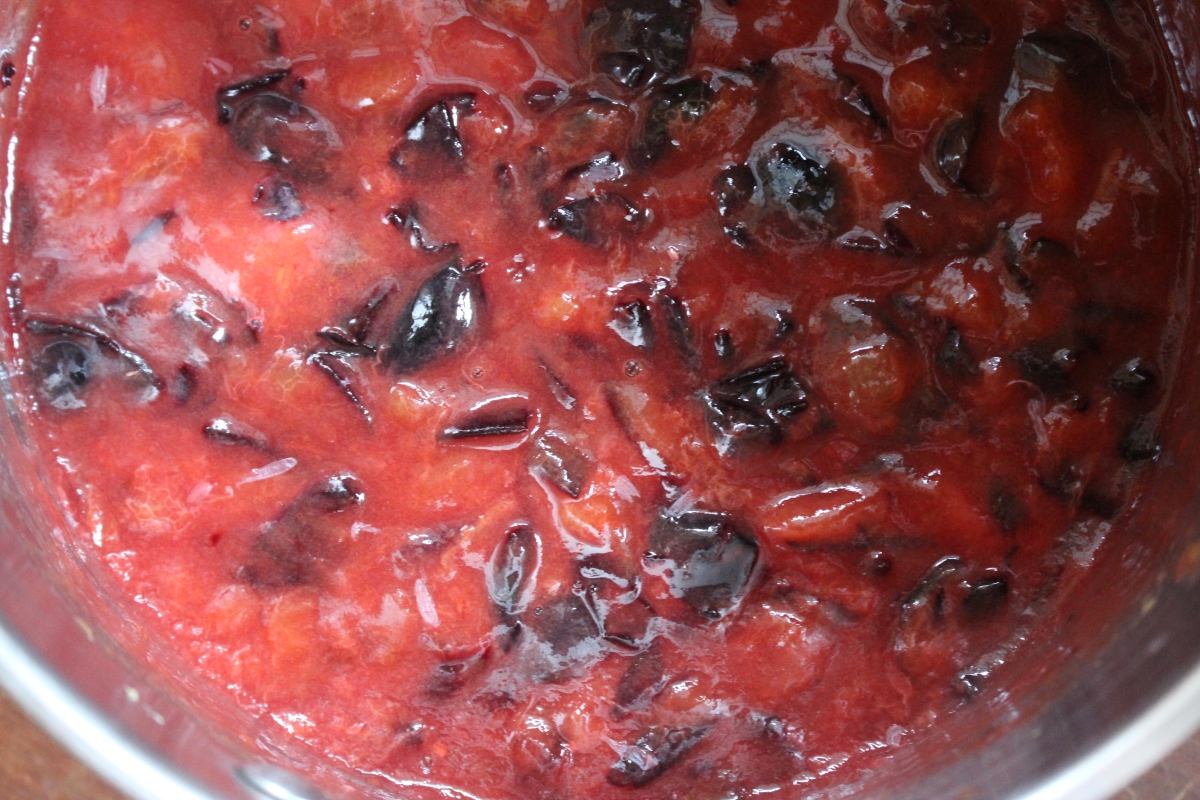
Cook the damson jam until it thickens up nicely and reaches gel stage.
You can test for set on a plate that’s been chilled in the freezer, or you can use an instant read thermometer. Damson jam is “set” at 220 degrees F at sea level. If you’re above sea level, that drops a bit at higher elevations. For every 500 feet above sea level the finish temperature will drop by 1 degree F. I’m at 1000 feet, so my jams finish at 218 F.
Damson plums are really full of pectin, so the jam should set rather quickly. Expect to cook it around 5 to 15 minutes at most, depending on how hot your stove is and the characteristics of your exact plums (growing conditions can impact set).
None the less, watch the jam closely, and stir frequently to prevent overflows and scorching.
When the jam reaches set point, remove the pot from the heat and ladle the jam into prepared jars leaving 1/4 inch headspace.
It should set nicely with a rich sheen and chunks of damson skin for texture.
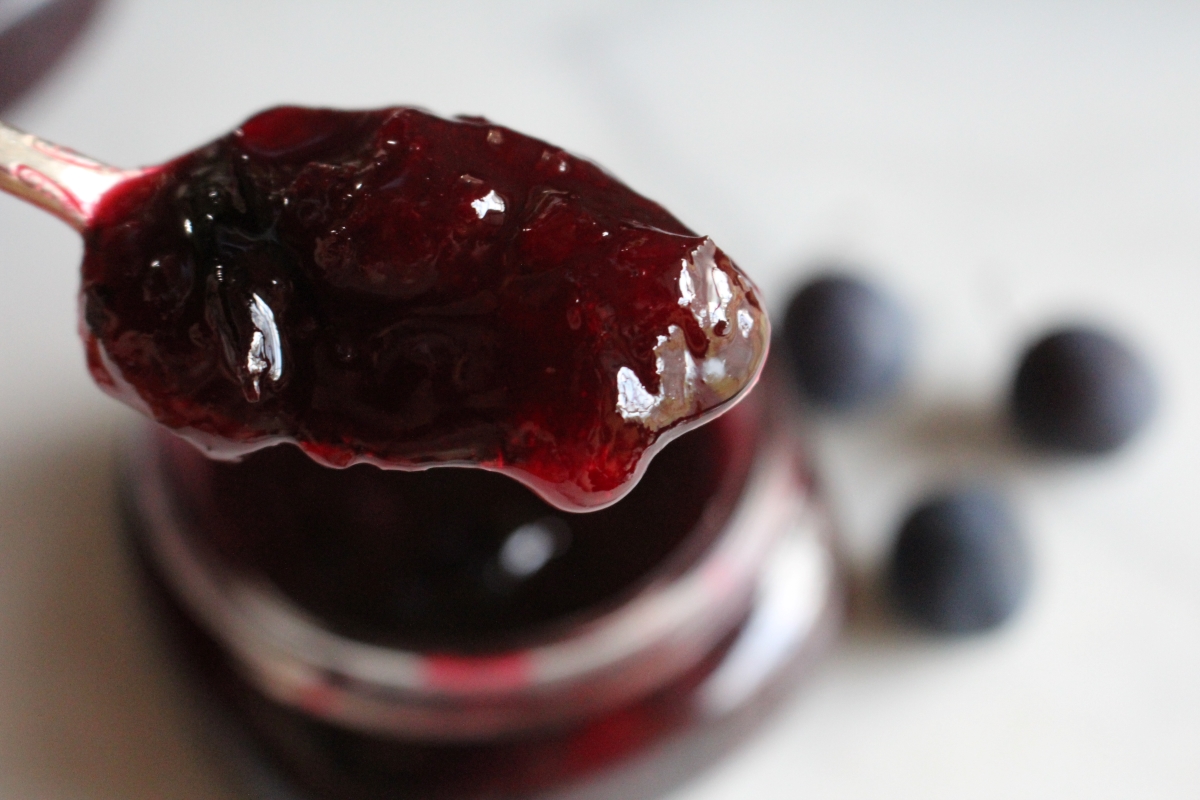
Canning Damson Jam
Canning is optional, but it allows you to create a shelf stable preserve that you can enjoy year round. Properly canned jams maintain peak quality for 18 months without refrigeration, and are safe to eat much longer provided they’re still sealed.
Without canning, you’ll have to store this preserve in the refrigerator, where it’ll keep for several weeks, or freeze where it’ll keep for up to 6 months.
If you’re canning damson jam in a water bath canner, you’ll want to prepare a water bath canner before you begin. Preheat the canner to around 180 degrees, or just barely simmering.
Make the jam as you otherwise would, and then ladle it into canning safe jars leaving 1/4 inch headspace.
De-bubble jars, adjust headspace and wipe rims. Cap with 2 part canning lids to finger tight.
You can use quarter pint, half pint or pint canning jars for this recipe, and the processing times are the same for all three sizes. Don’t can in jars larger than pint.
Process jars in a water bath canner for 10 minutes below 6,000 feet in elevation, and increase the time to 15 minutes above 6,000 feet.
After the process time is complete, remove the jars of damson jam from the canner and allow them to cool on a towel on the counter. When cool, check seals.
Store any unsealed jars in the refrigerator for immediate use. Properly canned and sealed jars of damson jam will maintain peak quality on the pantry shelf for 18 months, and be safe to eat for much longer.
Refrigerate after opening.
Plum Preserve Recipes
Looking for more ways to preserve plums? These plum canning recipes will keep you busy!
- Plum Jelly
- Plum Jam without Pectin
- Canning Plums
- Plum Butter (coming soon)
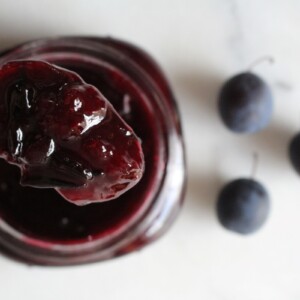
Damson Jam
Equipment
Ingredients
- 5 cups damson plums, pitted and coarsely chopped, about 2 lbs not pitted whole damsons
- 3 cups sugar
- 3/4 cup water
Instructions
- If canning, prepare a water bath canner, jars and lids before beginning.
- Pit the damsons, either by using a cherry pitter, or by cutting them in half with a paring knife and removing the pit by hand.
- Coarsely chop the damson plums and place them in a jam pot with the water and sugar.
- Turn on the heat to medium high bring the damsons to a hard boil, stirring frequently.
- Cook the damsons until they reach gel stage. You can test for set on a plate that's been chilled in the freezer, or you can use an instant read thermometer. Damson jam is "set" at 220 degrees F at sea level. If you're above sea level, that drops a bit at higher elevations. For every 500 feet above sea level the finish temperature will drop by 1 degree F. I’m at 1000 feet, so my jams finish at 218 F.
- Once the jam is set, ladle it into prepared jars leaving 1/4 inch headspace. De-bubble jars, adjust headspace and wipe rims. Cap with 2 part canning lids to finger tight.
- If canning, process jars in a water bath canner for 10 minutes. If above 6,000 feet in elevation, increase canning time to 15 minutes.
- After the process time is complete, remove the damson jam from the canner and allow them to cool on a towel on the counter. When cool, check seals. Store any unsealed jars in the refrigerator for immediate use.
- Properly canned and sealed jars of pickled figs will maintain peak quality on the pantry shelf for 18 months, and be safe to eat for much longer. Refrigerate after opening.
Notes
Nutrition
Nutrition information is automatically calculated, so should only be used as an approximation.
Easy Jam Recipes
Looking for a few more jam recipes to fill your pot?
Summer Canning Recipes
Canning more than just damsons this season?
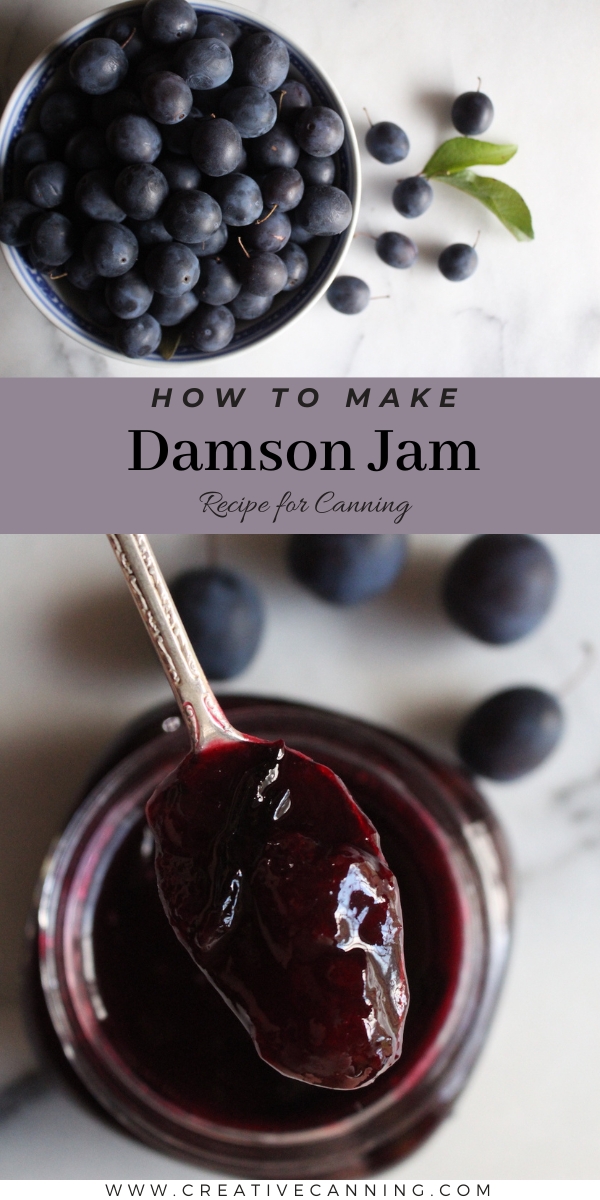

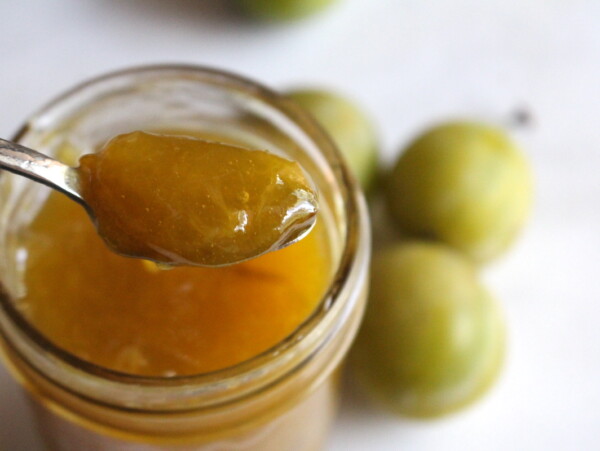
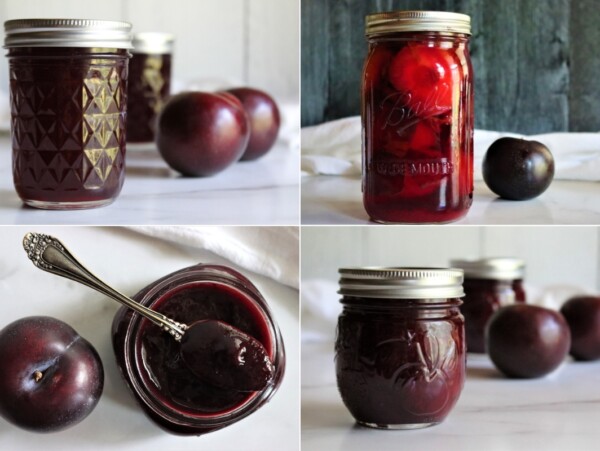
I was able to use less sugar as the plums were very ripe and sweet this year.
Thanks for the recipe.
Wonderful, so glad it worked out for you!
Damsons have such an amazing complex flavor, and that really shines through in this simple jam recipe. Delicious!
What size canning jars did you use? Do I need to adjust my times for different sized jars?
I’m planning on using pint sized jars.
The canning times for jams are the same for quarter pint, half pint and pint jars, and should be 10 minutes below 6,000 feet and 15 above 6,000 feet. These times work for any jar pint or smaller.
Hi I would love to use your website more and try more recipes but it’s hard to navigate past the few options of recipes on your homepage. Are you able to put in a menu or be able to show all of the available recipes?
Great question! I just added a navigation menu at the top that should help.